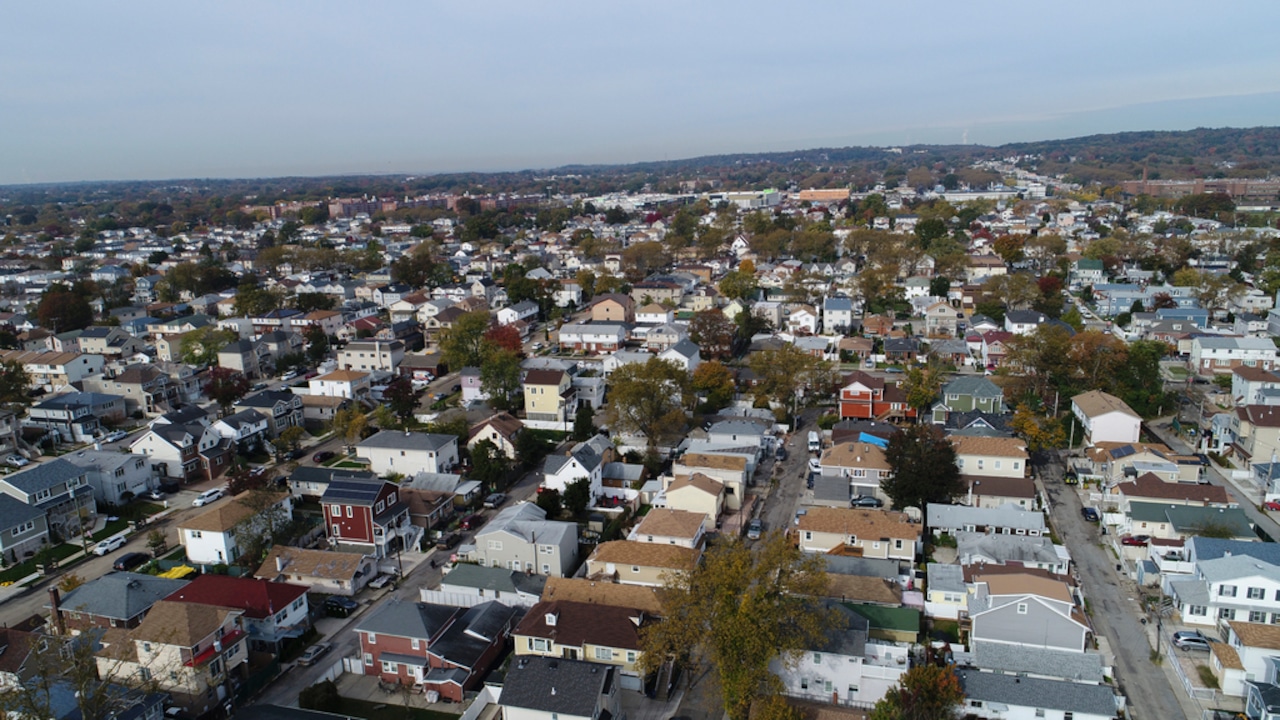STATEN ISLAND, N.Y. — A ballot question that would transfer control of some land use decisions from the City Council to the City Planning Commission has drawn the ire of borough lawmakers who warn the potential change could have devastating impacts on the future landscape of Staten Island.
In November, New Yorkers will vote on five ballot questions from Mayor Eric Adams’ Charter Revision Commission, one of which would create a new Expedited Land Use Review Procedure as a complement to the existing Universal Land Use Review Procedure.
Traditionally, projects that need land use permissions, like zoning map changes or non-city public improvements, go through ULURP, which can be a months-long process with input from the mayor, City Council, borough presidents and community boards.
If approved, the ballot proposal would create a new expedited system for certain proposals that currently need ULURP approvals, including smaller housing proposals, city map changes and resiliency projects.
Borough presidents’ and community boards’ review periods would run concurrently under the expedited process instead of one after the other, as they do currently. The Charter Revision Commission estimates that the ELURP would cut the time it takes to complete the public review process in half.
But one aspect of the ELURP process in particular has struck a nerve with the borough’s city councilmembers, who argue that the change would take away power from local communities to have a say in housing development and infrastructure projects.
Under ULURP, final say on approvals rests with the City Council. With ELURP, that power would be given to the City Planning Commission.
“The City Planning Commission’s decision would be final, with no subsequent review by the mayor or the City Council,” according to the Charter Revision Commission Final Report.
Councilmember Kamillah Hanks, a Democrat who represents the North Shore, said the change would prevent Staten Islanders from having any real say in the future development of their communities, while giving the city more power to do as it pleases, even without the support of those that the city’s decisions would impact most.
“The ballot proposals before voters this year would dramatically alter how local land use decisions are made in New York City. They would strip authority from communities and their elected representatives, leaving Staten Islanders with less say in how and where housing is built. These changes would weaken the ability of local officials to ensure that projects meet neighborhood needs and include the necessary infrastructure,” said Hanks.
“Without meaningful oversight, transparency, or accountability, developments could be pushed through with little regard for the communities they affect,” she added.
Councilmember Frank Morano, a Republican who represents the South Shore, said he opposes this ballot question, and several others, as their primary objective appears to be allowing the city to increase housing density, something many Staten Islanders have long opposed in an effort to maintain the character of the borough’s predominantly low-density neighborhoods.
“These ballot questions are being sold as ‘housing reform,’ but what they really do is take power away from Staten Islanders and hand it to developers and bureaucrats in Manhattan. I’m voting no on 2, 3, 4, and 5 because once you lose your voice in what gets built on your block, you don’t get it back,” Morano said.
“My office will be spreading the word on these proposals and how they will affect our city. And if these pass, please don’t call my office six months from now asking why they’re building 10 houses where there used to be one — because that’s exactly what these proposals would allow,” he continued.
Councilmember David Carr, a Republican who represents Mid-Island, also stands in opposition to the ballot questions, arguing that the commission did not conduct and share the necessary research to know the true extent of the proposals’ impact.
“The voters have a right to know the potential environmental consequences of these ballot proposals, but they can’t possibly have that information because the commission violated state and city environmental law by neglecting to provide or even conduct any analysis. This is particularly dangerous because these proposals would take away the local representative’s ability to mitigate the hazards of unchecked development,” Carr said.
While ELURP would not allow any property to be upgraded from low-density to medium- or high-density zoning, it would allow for changes to higher levels of low-density zoning that would permit larger, multifamily developments in places they’re not currently permitted.
Specifically, the ELURP process would be used for the following land use changes and projects:
Modest housing proposals that increase residential capacity by no more than 30% or allow housing with a standard height no taller than 45 feet.Acquisition, disposition, and City Map changes related to affordable housing.Minor infrastructure and resiliency projects, like raising the grade of a street to protect a community from flooding and adding solar panels on public land.
“ELURP would provide a path for modest housing changes that ULURP virtually never enables today. In medium- and high-density districts (zoned R6 and above), it would allow zoning map changes that increase residential capacity by 30% or less. In low-density parts of the city (zoned R1 through R5), it would enable zoning map changes that allow small-scale multifamily housing, up to a standard height limit of 45 feet and a maximum floor area ratio (FAR) of 2,” according to the City Charter Commission.
If you purchase a product or register for an account through a link on our site, we may receive compensation. By using this site, you consent to our User Agreement and agree that your clicks, interactions, and personal information may be collected, recorded, and/or stored by us and social media and other third-party partners in accordance with our Privacy Policy.

